#italian comedy
Text
Italian Good Omens mpreg au in 2023 was not on my bingo card, and yet
#santo cielo#ficarra e picone#good omens#neil gaiman#italian movies#italian comedy#giovanni storti#per gli amici italiani
80 notes
·
View notes
Text
Ho scoperto per caso che esiste una seconda stagione di Incastrati e vi regalo questa perla di italianità dalla prima puntata:
Tonino, qua non è che siamo a Milano che uno dà l’appuntamento preciso. In Sicilia… che ne so, se uno dà l’appuntamento alle due meno cinque si intende un orario variabile, fra l’una e le quattro/quattro e mezza.
Ficarra e Picone mi rendono sempre molto felice
#incastrati#ficarra e picone#incastrati netflix#milano vs palermo#italian comedy#italian series#italian culture#stereotypes#sicily#south italy#comedians#love#netflix#mailmiocuoredipietratremaancora
7 notes
·
View notes
Text
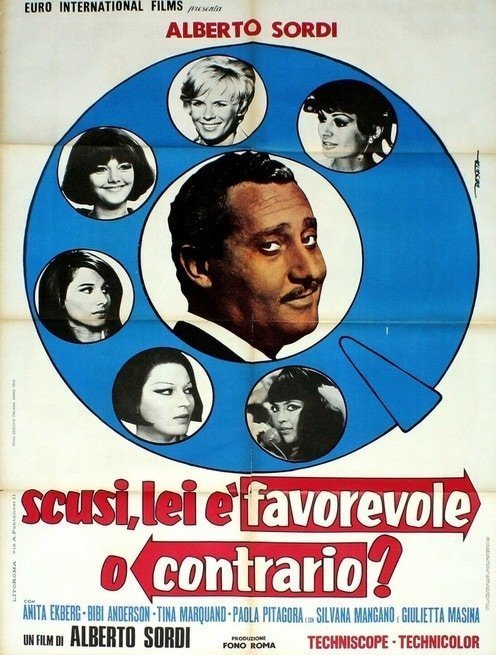
Poster from Alberto Sordi's comedy Scusi, Lei è Favorevole o Contrario?
From ebay.
#Tina Aumont#actress#Anita Ekberg#Bibi Anderson#Paola Pitagora#Silvana Mangano#Giulieta Masina#Alberto Sordi#Italian comedy#Scusi Lei e Favorevole o Contrario#1966 Scusi Lei e Favorevole o Contrario
16 notes
·
View notes
Text



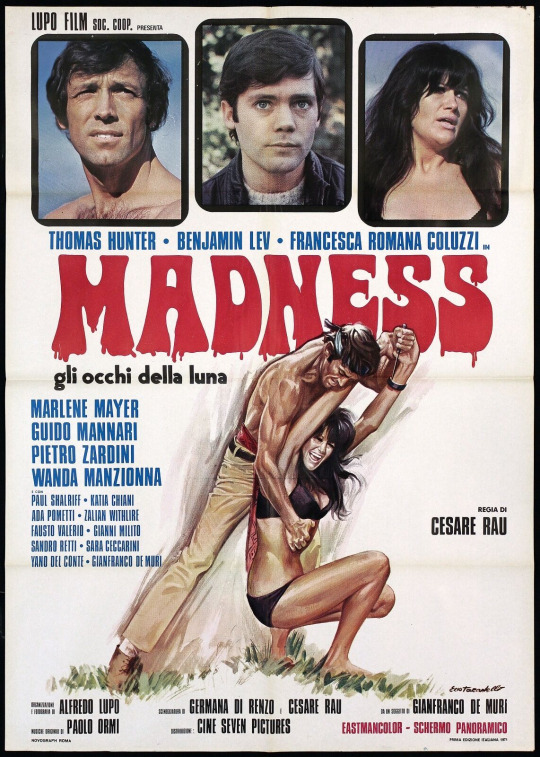

#madness gli occhi della luna#cesare rau#francesca romana coluzzi#thomas hunter#giallofever#giallo#giallo fever#gialli#italian giallo#italian cult#cinema cult#cult#italian sexy comedy#international cult#italian horror#film horror#horror film#italian cinema#italian comedy
10 notes
·
View notes
Text
Fan italiani di jojo, possiamo essere d'accordo che Ghiaccio ha le Lundini vibes e melone è palesemente parente di Alessandro Orlando?
#jojo part 5#benny rambles#jjba ghiaccio#jjba melone#valerio lundini#alessandro orlando#meme#italian trash#italian comedy#no seriamente raga#quanto vero
2 notes
·
View notes
Text

2/365
2 notes
·
View notes
Text
was dragged into watching lol season 4 (the italian comedy show) bc I don't really go there at all but I have to say one thing: claudio santamaria bono come il pane.
#italian comedy#lol 4#claudio santamaria#I've only ever seen him in romanzo criminale but I actually forgot it was him#translation for the last sentence: that's a non fancy way of saying he's really hot
1 note
·
View note
Text
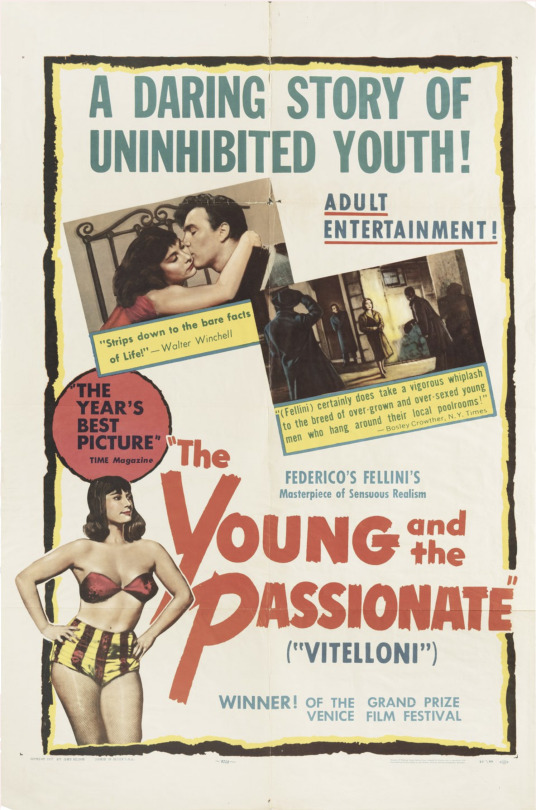
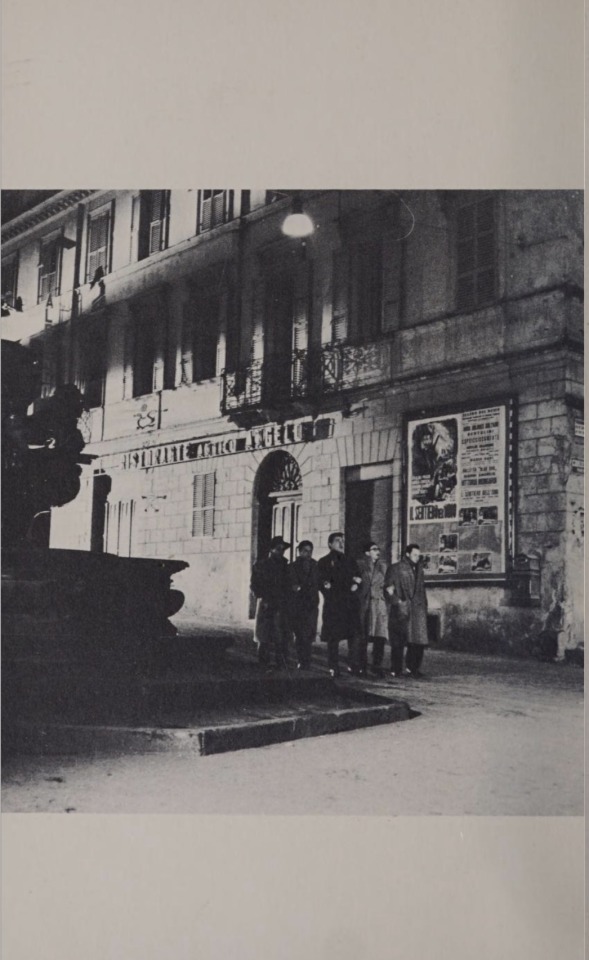

Three screenplays: I vitelloni. Il bidone. The temptations of Doctor Antonio, Federico Fellini, New York, Orion Press, 1970.
#movie#film#motion picture#Italian movie#Italian film#Italian motion picture#cinema#Italian cinema#screenplay#film script#I vitelloni#Federico Fellini#Italian comedy#Italian drama#Ennio Flaiano#Tullio Pinelli#foreign film#international movie#script excerpt#screenplay excerpt#movie poster#film poster
0 notes
Text
A brief introduction to the history, context and characters of Commedia dell’arte and its 21st century relevance in performance and study;
By
Ben-Jamin Newham
Artistic Director
Fools In Progress Theatre Company
This article provides an overview of Commedia Dell'Arte, a style of improvisational theater characterized by masks and stock characters. Characters in this style are versatile and could strategically compliment one another throughout the performances. - Commedia Dell'Arte began as troupes in the early 16th century that were formed by performers such as Angelo Beolco, better known as Ruzzante. His comedic performances of Italian popular pride and the Zanni character type in improvised theatre would become the basis for what is now known as Commedia Dell'Arte. The characters that were performed often had leather masks to emphasize their characteristics and create a professional space for them on stage. Evidence exists from 1560s to 1570s when Ruzzante was performing with his masks, and even earlier references include actress Isabella Andreini in 1520s, and Turi Fantoni in 1540s. The style of Commedia Dell'Arte includes names like Pulcinella, Brighella, Pantalone, Dottore, and Arlecchino which were all used to entertain audiences with various scenarios that would relate to their everyday lives.
"Some early references to this style include names like commedia allimprovissa (the improvised theatre) and commedia zannesca (the zanni-esque theatre)." 6
"Whatever its origins, by the 1520s, performers like Angelo Beolco (il Ruzzante) and early practitioners of the Zanni character type were entertaining audiences with a style that appears to be early Commedia." 6
"Commedia--the so-called Comedy of Masks--had flourished based on a system of character masks, and the material culture of the leather mask was a source of Italian popular pride, even outside of the realm of theatre." 0
"Evidence exists as early as the 1540s that Commedia troupes began to create professional space for female performers, but the late 1560s and 1570s were the Age of the Actress." 6
This style of theatre was developed by the Italian people in the mid-16th century and began with specific troupes that were formed by actors such as Francesco Andreini and his wife Isabella Andreini. These performers became a distinct company called Confidenti, with their own costumes, masks, and characters. It was during this time that Francesco's troupe, Fedeli, was created which also included a Desioi troupe that focused on improvisation and other elements of Commedia Dell'arte. The Gelosi troupe became the most successful of them all and their performances were entirely masked. They filled scenes with their stock characters which each represented a specific character in the audience's life. It is believed that the existence of Commedia Dell'Arte began due to the Black Plague that occurred in the 16th century and Francesco Andreini's husband being affected by it.
"By the mid-16th century, specific troupes of commedia performers began to coalesce, and by 1568 the Gelosi became a distinct company." 5
"Many troupes were formed to perform commedia dellarte, including I Gelosi (which had actors such as Isabella Andreini, and her husband Francesco Andreini[14]), Confidenti Troupe, Desioi Troupe, and Fedeli Troupe." 5
"It was an entirely masked performance, each mask representing a specific character whom the audience would all be familiar with." 4
"Commedia DellArte came into existence sometime after the black plague and some of the stock characters who filled the scenes would have been well known by the Italian people because of this." 4
This led to a form of theatre that began with the use of stock masks and other characters such as actresses in counterpoint roles. This style then came to include additional unmasked characters, which is why today it is one of the most popular theatrical forms (although today it is known as a ‘sitcom’ and is a diverse genre of comedy that encompasses animated sitcoms like ‘The Simpsons’ ,‘Loony Toons’, ‘Family Guy’ through to the great live recorded shows like ‘Frasier’, ‘Mr Bean’ and ‘Modern Family’). Well known characters of Commedia dell’arte such as Arlecchino (the most famous name for the main male servant character), Colombina (the famous female servant), Pantalone, Il Dottore and Brighella are just some of the characters included. The Commedia Dramatis Personae establishes a new tradition that includes the character of Servetta, an unmasked female servant.
"Other characters began as stock masks and developed into well-known characters in the hands of the most talented players." 1
"Some of the most popular characters included Il Dottore or The Doctor, Pantalone, Arlecchino, Arlecchina and Colombina." 4
"The male Lovers, as their counterpoints, also performed unmasked, and additional unmasked characters came to include the servetta (French, soubrette), an unmasked female servant like the famous Colombina." 6
"The advent of the actress also establishes a new tradition of unmasked characters in the Commedia dramatis personae." 6
This stock character type owes its genesis to pantomime and is drawn from comic operas. The types of stock characters used in Commedia are Arlecchino or Harlequin, Zanni and Brighella (low ranking servants), military officers, and foolish old men. These characters represent fixed social types that are common to Gaetano Donizetti's operas such as L'Elisir d'amore and Il columbina. The characters' behavior is characterized by false bravado and exaggerated posturing as a way of conveying a message. For example, the foolish old men were often portrayed with exaggerated physical traits such as a limp or an overly large nose. This style of theatre has been referred to collectively by the term "Tom Foolery".
"Zanni is one such stock character type that is a collective term for all the low ranking servants of commedia, including Arlecchino (Harlequin), Columbina, Brighella and Pulchinella." 2
"The characters of the commedia usually represent fixed social types and stock characters, such as foolish old men, devious servants, or military officers full of false bravado." 5
"For example, pantomime, which flourished in the 18th century, owes its genesis to the character types of the commedia, particularly Harlequin." 5
"The comic operas of Gaetano Donizetti, such as Elisir damore, draw readily upon commedia stock types." 5
The Neapolitan troupe of theatre playwrights, Commedia Dell'arte performers, and students repertory players have been around for centuries. They originally began in the 16th century in Renaissance Italy with the development of opera stock characters and puppet companies. By witnessing theatrical virtuosity and clever wit behind their improvisation, audience members were described as being "in awe" of their performances. Not only did they copy contemporary illustrations but they also copied their masks which lampooned the wealthy powerful landowners of the time. This style of theatre provided a unique dramatic technique that was highly entertaining to watch. Commedia Dell'arte has experienced several revivals throughout history; during the 19th century an Italian actor by the name of Filippo joined the ranks and became known as Il Vecchi in 1860s. He became very popular due to his portrayals of a certain stock type character known as Peppino who was an old man with a heart of gold.
"Il Vecchi (the old men) joined the ranks of commedia, as a stock type that lampooned the wealthy, powerful landowners of Renaissance Italy." 2
"Through their association with spoken theatre and playwrights commedia figures have provided opera with many of its stock characters." 5
"As for the product, 16th- and 17th-century commedia dellarte performers set new standards in dramatic technique and audience members described witnessing a theatrical virtuosity never seen before." 0
"Revivals, notably in the 1960s by a Neapolitan troupe led by Peppino de Filippo, by puppet companies in Prague, and by students and repertory players in Bristol and London, however carefully their masks copied contemporary illustrations, however witty their improvisation, could only approximate what the commedia dellarte must have been." 1
Commedia dell'arte was popular in sixteenth century Italy and gave rise to modern theatrical productions. The productions were performed in the street or public square with little scenery and actors relied on their wits to convey characters and create atmosphere. Characters were often stock, but with the actors’ capacity for improvisation, each production was unique. Male characters were more common than female ones and form a crucial part of the setting. Performances usually took place outdoors, as life in the streets was a major source of inspiration for these productions.
"It was the actors who gave the commedia dellarte its impulse and character, relying on their wits and capacity to create atmosphere and convey character with little scenery or costume." 1
"It was conventional for sixteenth-century productions of the Commedia dellarte to take place in the street or the public square, a setting which privileged male characters." 4
"This Italian, street theatre was not just simply a form of entertainment but it was crucial part of life in the streets of early-modern Italy." 4
Commedia dell’arte was a physical and improvisational theatre that was created by theatre practitioners in the 16th century. This style of theatre focused on painting broad comedy while also incorporating music, dance, and acrobatics. Its origins are still unclear, but it is known that the style was popular throughout Italy. It has been said that the first to document this style of theatre was Flaminio Scala, a playwright who wrote scenarios for commedia performances during the 17th century. Carlo Gozzi also used commedia dell’arte in his own scripted plays. Goldoni is credited with helping to legitimize commedia dell’arte as a true theatrical form. He had written many plays himself and included many elements from commedia dell'arte performances into them - including minor performers and gentle brushstrokes which he used to tell his tales. He wrote about given characters such as Arlecchino (also known as Harlequin), Brighella, Pantalone, Dottore Balanzone and Il Capitano that all belong to a troupe called I Gelosi.
"Flaminio Scala, who had been a minor performer in the Gelosi published the scenarios of the commedia dellarte around the start of the 17th century, really in an effort to legitimize the form--and ensure its legacy." 5
"Despite the loss in Western theatre of its direct connections to commedia dellartes origins, the genre was sometimes used as a training component in physical and improvisational theatre at the beginning of the 21st century." 1
"Another popular scenario writer and theatre practitioner was Carlo Gozzi (1720-1806) who is Five Tales for the Theatre is a rare example of scripted Commedia in which the characters are given a preface of the story and then actual lines to perform." 4
"Nevertheless, the playwright demonstrates his care for the genre and his love of the characters by painting broad comedy in gentle brushstrokes." 0
Vincenza Armani was born in Italy and became a commedia performer at the Italian National Theatre in the late 1700s. By the time he wrote his first play for the stage, he had already become famous as an actor in commedia repertoire. His works helped to define Italian theatre history, and his influence spread throughout Europe, even reaching as far as France where his plays were performed at the French National Theatre. He also helped Carlo Goldoni with his work by creating more realistic representations of characters on stage than had been seen before. This confirmed a major landmark in theatre history and was given great acclaim by Carlo Goldoni himself who saw it as a primacy of more realistic characters over traditional ones.
"Either way, his work helped to shape a new Italian national theatre based on more realistic characters, more naturalistic representations and the primacy of the playwright over the actor." 0
"In his view, Commedia had given a propitious birth to modern theatre, but it was high time for the Italian stage to grow up." 0
"The French playwright was quick to "share" their material as well, borrowing heavily from the commedia repertoire in the creation of a French national theatre." 0
"Another major landmark in theatre history was first confirmed in 1566 when a Commedia performer named Vincenza Armani became the first documented professional actress." 6
It was a popular form of theater with performances often taking place in city squares as well as theaters. Commedia dell'Arte is associated with many players, among which are Tiberio Fiorillo and Francesco Andreini. Each actor has their own characteristic mask and costume and portray different types of characters such as Scaramuccia, the French Scaramouche, or the Capitano. The walk, pose and gesture were very important elements that added to the understanding of each character. There were also clever compliments between characters that added a great element of comedy to each performance.
"The characters in Commedia DellArte are extremely versatile and would strategically compliment one another throughout the performances." 4
"In Commedia, the characteristics of a character (such as a walk, a pose, or a gesture) are just like wearing a mask." 3
"Thus, though many players are individually associated with parts--the elder Andreini is said to have created the Capitano, and Tiberio Fiorillo (1608-94) is said to have done the same for Scaramuccia (the French Scaramouche--for an understanding of the commedia dellarte, the mask is more important than the player." 1
Commedia dell'Arte is a form of theater that first appeared in Italy in the 16th century. It is based on stock characters, such as il Capitano, Pantalone, and Arlecchino. These characters have always been and continue to be found in numerous variations throughout the literature and performances of Commedia dell'arte meaning there is no definitive right or wrong and as long as the style remains there is great freedom for a performer who knows they can’t make a mistake. This provides confidence which radiates to aspects of their life far beyond the stage or classroom.
"Numerous variations of Il Capitano can be found in commedia scenarios - sometimes he is masked, sometimes unmasked; sometimes he is an incompetent phoney, sometimes a wealthy and eligible suitor." 2
"In Performance and Literature in the Commedia Dell Arte by Robert Henke, he discusses how the term stock character does not give the creative and versatile characters justice." 4
Cited Sources
https://www.shakespearetheatre.org/watch-listen/a-well-made-comedy-the-legacy-of-commedia-dellarte-carlo-goldoni/ 0
https://www.britannica.com/art/commedia-dellarte 1
https://learningthroughtheatre.co.uk/commedia 2
https://www.theatrefolk.com/blog/create-a-commedia-dellarte-character/ 3
https://justinborrow.wordpress.com/2014/07/16/commedia-dellarte-the-theatre-of-the-streets/ 4
https://en.wikipedia.org/wiki/Commedia_dell%27arte 5
https://www.factionoffools.org/whats-commedia 6
#commedia dell'arte#commedia#fools in progress#act the fool#harlequin#commedia mask#slapstick#comedy#slapstick comedy#history#article#Italian comedy#teaching theatre#teaching comedy#Ben-Jamin Newham#what is Commedia dell’arte#why study Commedia dell’arte?
1 note
·
View note
Text
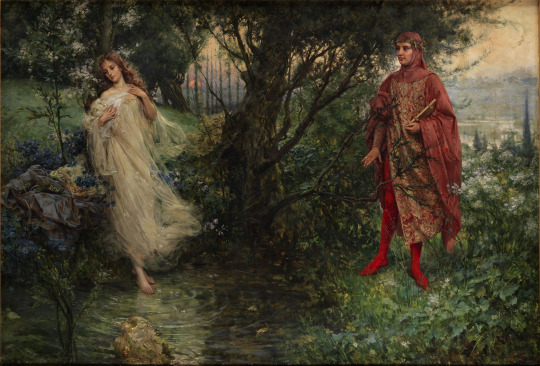
Dante and Beatrice, Salvatore Postiglione (1861-1906)
#art#art history#Salvatore Postiglione#literary painting#illustration#Divine Comedy#la divina commedia#Dante#Dante Alighieri#Dante and Beatrice#Beatrice Portinari#Realism#Realist art#Italian Realism#Italian art#19th century art#oil on canvas
2K notes
·
View notes
Text


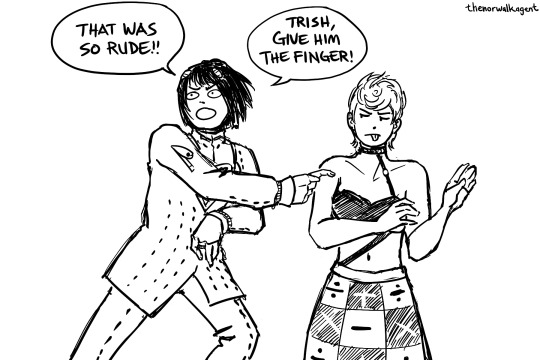
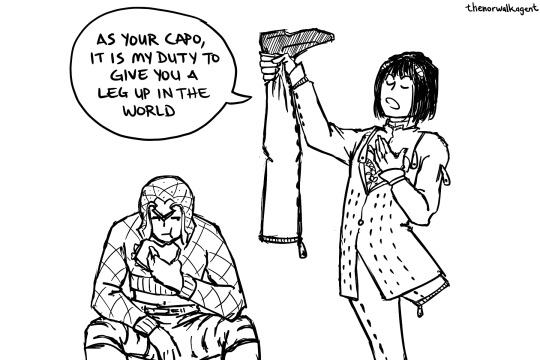

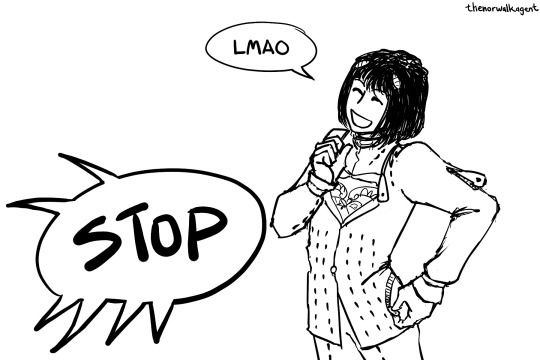
To everyone thinking that was Bruno's arm (or saying it should have been) in the other comic....ur so right and also stop being funnier than me on my posts /jk
But may I also propose...dad jokes...
#but actually i love it when people are funny in the tags#you guys are all so clever#communal comedy is my favorite#also pretty sure most if not all of these do not work in italian#shrug emoji#jjba#jjba part 5#mine#bruno bucciarati#narancia ghirga#panacotta fugo#giorno giovanna#trish una#guido mista#leone abbacchio
5K notes
·
View notes
Text

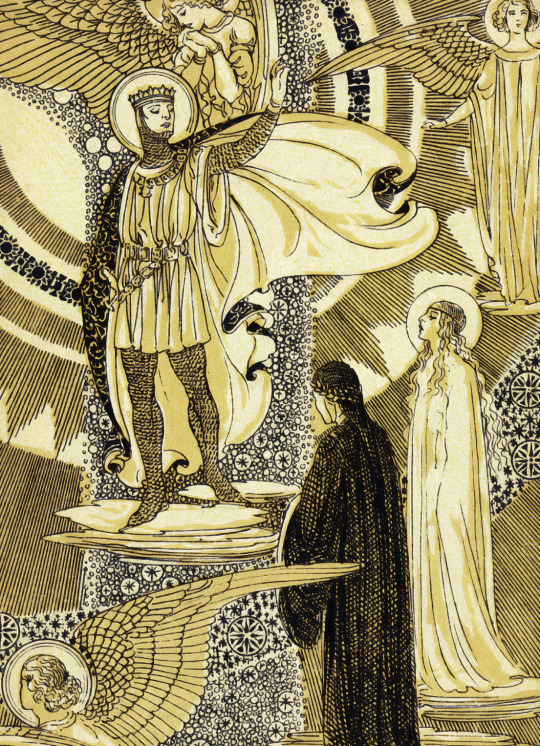
Illustrations from Dante's Paradiso by Ezio Anichini (1931)
#ezio anichini#art#illustration#golden age of illustration#1930s#1930s art#vintage art#vintage illustration#vintage#italian art#italian artist#postcard#postcards#dante alighieri#divine comedy#paradise#heaven#angel#angels#classic art
2K notes
·
View notes
Text
Dante writing his Comedy
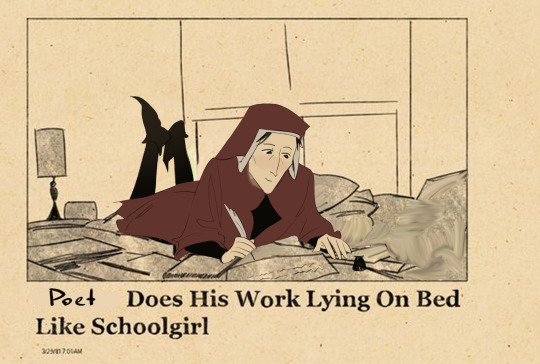
#dante alighieri#divine comedy#vergil#virgil#the divine comedy#dante#la divina commedia#beatrice#beatrice portinari#divina commedia#italian literature#medieval poetry#medieval literature
608 notes
·
View notes
Text





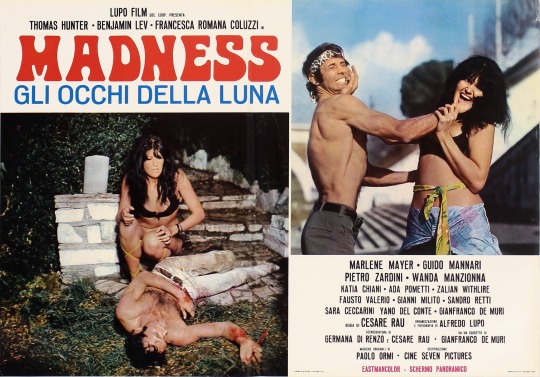
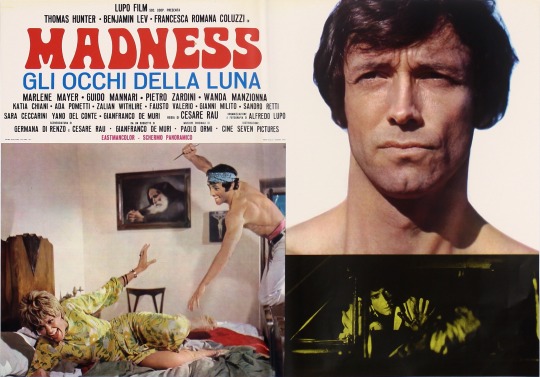


Madness - Gli occhi della luna
Data di uscita: 18/Agosto/1971
Regista: Cesare Rau
Personaggi: Sara Ceccarini, Marlene Mayer, Prostitute in Red Dress, Katia Chiani, Francesca
Casa di produzione: Lupo Film
Le riprese del film, girato in un casolare di campagna nei pressi di Castel Madama (Tivoli) e a Cinecittà, iniziarono il 27 luglio 1970 e terminarono martedì 8 giugno 1971. La prima del film fu il 18 agosto 1971 presso il cinema Odeon di Paola (provincia di Cosenza).
Questo film, per anni classificato tra i film scomparsi, è stato fortunosamente ritrovato nel 2007 nell'archivio della Cineteca di Bologna; un'altra copia in 35 mm era conservata dallo stesso regista, purtroppo scomparso nel 1990.
Marzia Damon è lo pseudonimo di Caterina Chiani, apparsa in altri film come Katia Chiani.
La locandina del film è stata realizzata da Ezio Tarantelli.
Nella colonna sonora di Paolo Ormi, l'omonimo motivo conduttore Madness è eseguito da "Black Sunday Flowers" (pseudonimo di Ghigo Agosti); il relativo 45 giri è stato pubblicato dalla Bla Bla di Pino Massara. Il brano è stato scritto da Harry Stott, altro pseudonimo di Ghigo, nonché fonico del film.
Nella sequenza iniziale del film appare il cantante Red Canzian (futuro componente dei Pooh), mentre si esibisce in un locale notturno con il complesso dei Capsicum Red del quale egli era il chitarrista.
#madness gli occhi della luna#cesare rau#francesca romana coluzzi#thomas hunter#giallofever#giallo#giallo fever#gialli#italian giallo#italian cult#cinema cult#cult#italian sexy comedy#international cult#italian horror#horror#film horror#horror film#italian cinema#italian comedy
6 notes
·
View notes
Text
Angel Dust, stealing the stage in Cannibal Town: Alright, sickos, my friend Charlie here told me you like a good show, so I'm here to deliver the most pussy-popping, toe-curling, pillow-biting routine any of youse have ever seen in your vintage postcard looking ass lives.
Cannibals: ...
Charlie: ...
Alastor: ...
Rosie: ...
Everyone: ...
Susan: ...I like this guy.
#liberal use of youse here i guess it fits angel??? italian american brooklynite??#i just found the idea hilarious. susan liking the most unlikely person to be of her taste lmao#she appreciates his moxie. a performer to the core#he proceeds to deliver an 18+ comedy routine that has her on the floor laughing#hazbin hotel#hazbin hotel angel dust#hazbin hotel susan#hazbin hotel alastor#hazbin hotel charlie#hazbin hotel rosie
271 notes
·
View notes